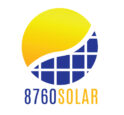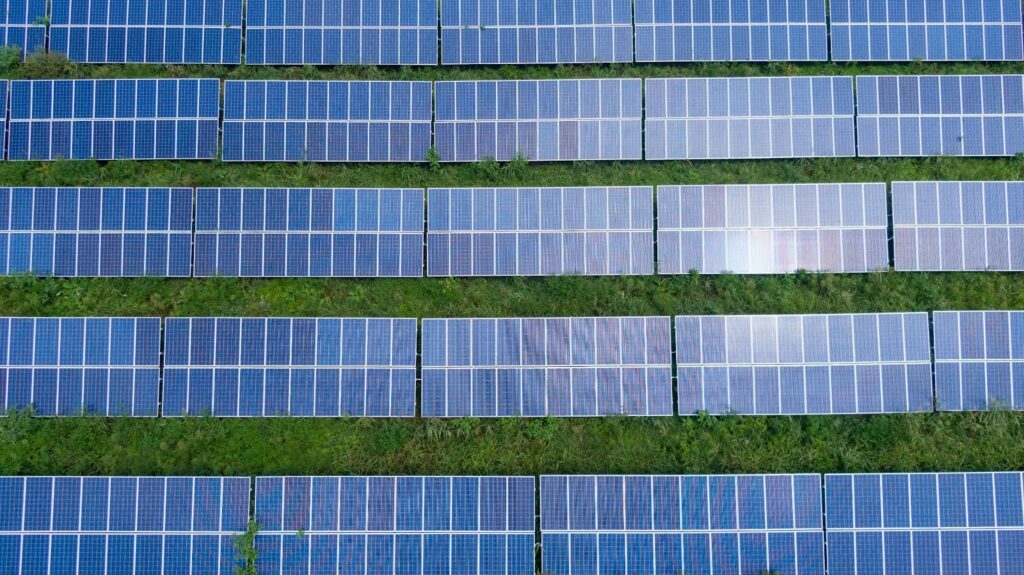
There are three main types of solar panels available that you can consider for your solar energy system: monocrystalline, polycrystalline, and thin film. Out of all the options, polycrystalline provides an excellent balance between value and efficiency.
In this article, we explore polycrystalline panels in depth so you can understand more about them and decide if they are the right option for you.
Here’s what you need to know about polycrystalline solar panels.
In a Nutshell
- Polycrystalline panels cost between $0.75 to $1 per watt, making them a sound choice for tight budgets.
- They have an efficiency rate of 13% – 16%, which is lower than monocrystalline.
- Polycrystalline is made from silicon shards and is characterized by its blue, mosaic-like appearance.
- Although cheaper, you need more of them and more space to achieve the desired output.
- Polycrystalline has excellent longevity and can last up to 30 years.
- PERC and bifacial polycrystalline panels provide a higher efficiency rate.
Polycrystalline Solar Panel Features at a Glance
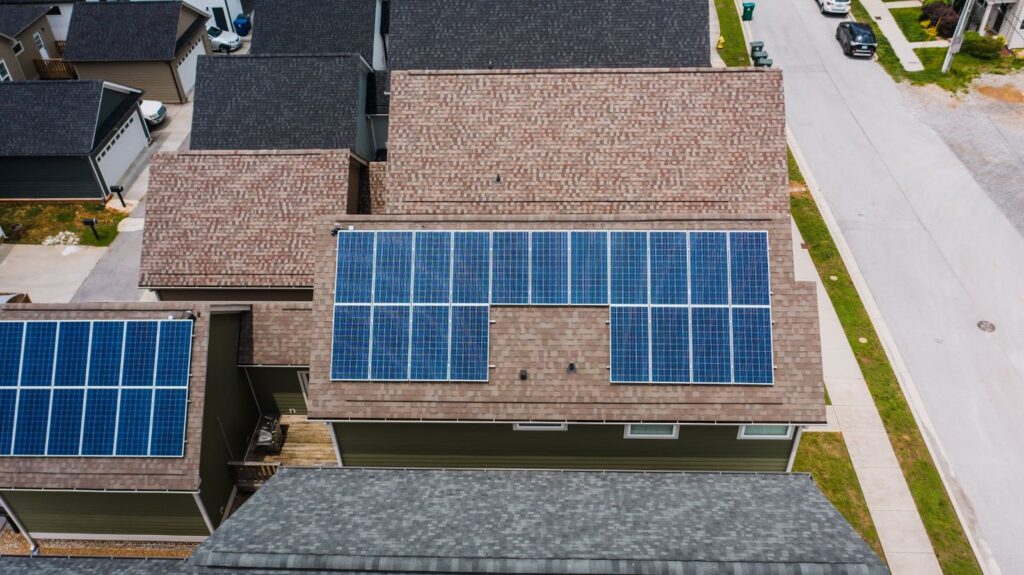
| Feature | Stat |
| Efficiency rate | 13% – 16% |
| Typical warranty | 25 years |
| Average lifespan | 25 – 30 years |
| Watt capacity | 250 – 290 watts (60 cell panel) |
| Average cost per watt | $0.75 to $1 |
| Average cost of a 10KW system | $7,500 – $10,000 |
What Are Polycrystalline Solar Panels?
Polycrystalline offers a cheaper and faster way to produce solar panels but the trade-off is a drop in efficiency compared with monocrystalline panels.
You can tell if a solar panel is created using polycrystalline because it will have a distinctive blue hue and a mosaic-like surface. In contrast, monocrystalline has an inky-black, smooth surface.
Since polycrystalline offers a more economical solution for solar energy, they are one of the most popular types of solar panels on the market. However, they are gradually becoming less common and you will often find that solar panel manufacturers will have a greater range of monocrystalline panels available than they do polycrystalline.
How Are Polycrystalline Solar Panels Made?
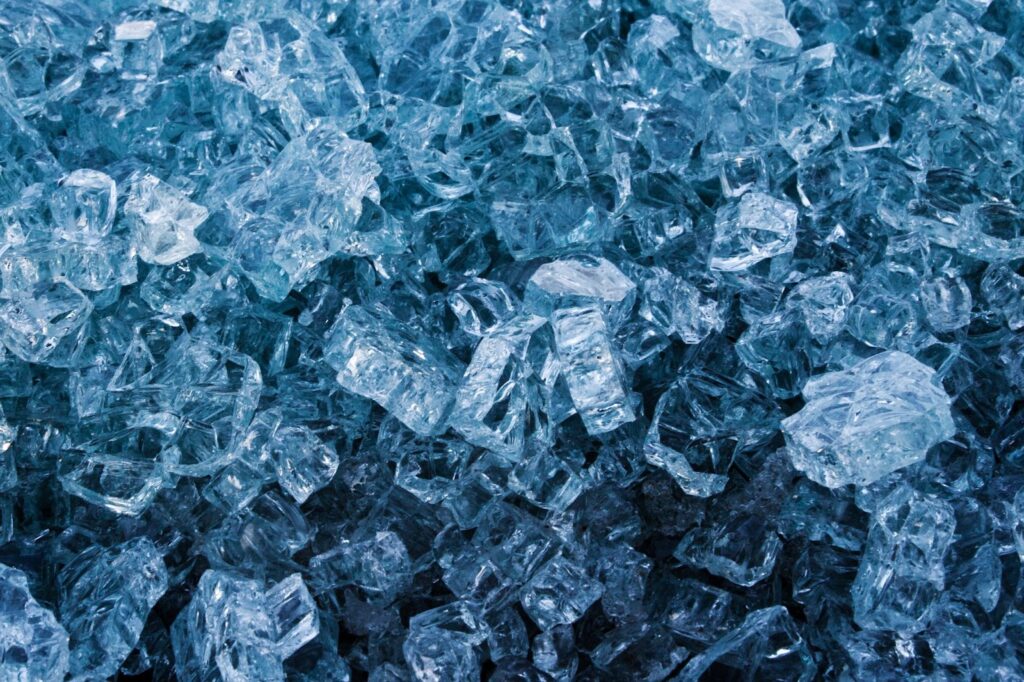
Unlike monocrystalline, which employs a complex manufacturing process using solid ingots of silicone, polycrystalline is created from fragments of silicon crystals.
In fact, it is not uncommon for polycrystalline panels to be created from the leftover silicone shards that are the byproduct of monocrystalline production that would otherwise be wasted.
The shards are melted down and then cast into square-shaped molds to form the ingots, which subsequently cool and harden into a solid state.
Once fully hardened, the ingots are sliced into paper-thin wafers and laid side by side in a square shape to form the solar panel. Then, to allow the generated electricity to be harvested, phosphorous is applied to one side of the wafers, boron is applied to the other, and metal contacts are attached to both sides.
Finally, a glass panel, a reflective layer, and a backing plate are added and everything is sealed in place using an aluminum frame.
Because silicon fragments are used, this is what results in the distinctive speckled blue color and mosaic-like pattern.
How Do Polycrystalline Solar Panels Work?

As sunlight hits the surface of the panel, the polycrystalline silicon cells absorb the light photons. These photons then make contact with the polycrystalline atoms, which causes electrons to be released.
As electrons are being produced, the phosphorous and boron coatings allow them to be captured and passed into the wire circuitry that connects the polycrystalline wafers with the power system.
This process creates an electrical current which flows into the electrical system and provides power to where it is needed. Often, the panels will produce an excess of power (more than the user needs at a given time), and when this happens, it can either be sent to a battery or to the grid.
How Well Do Polycrystalline Solar Panels Perform?
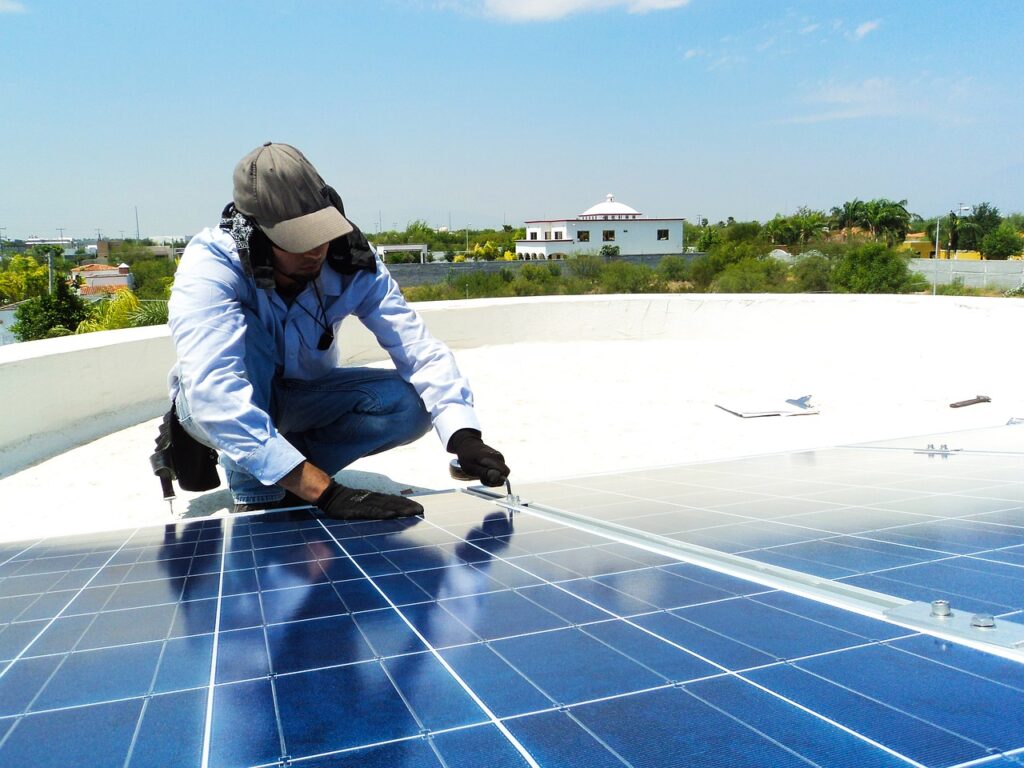
Polycrystalline solar panels perform less efficiently than their monocrystalline counterparts.
This is because the silicon wafers are made from fragments rather than solid pieces of silicon.
With so many fragments in such a tight space, there is less room for the electrons to bounce around, which results in less energy being generated. Overall, you can expect an efficiency rate of 13% – 16%, depending on the quality and brand of the panel in question.
Because polycrystalline is less efficient, you have to consider that more panels will be required to achieve the desired output. This makes polycrystalline installations larger in size and heavier overall.
Additionally, polycrystalline does not do as well as monocrystalline in high temperatures. Therefore, they are not always suitable for hot climates.
On the other hand, these panels perform well in varying weather conditions (snow, rain, sun, etc.) and still manage to perform well in low-light conditions. And they have great longevity, lasting around 30 years on average. As such, you can expect the warranty on them to be between 20 – 25 years.
What Types of Polycrystalline Solar Panels Are Available?
Bifacial Panels

Bifacial panels are available in monocrystalline and polycrystalline and are excellent for installations where space is not an issue, like farms, fields, and agricultural spaces.
These panels are double-sided, meaning they have polycrystalline wafers on the front and back faces.
When direct light hits the top surface of the panel, it harvests energy in the usual fashion. Meanwhile, the back of the panel is hard at work, capturing all of the indirect light that gets reflected off the ground.
Because of their double-faced composition, these panels cannot sit flush against or too close to a surface. There needs to be plenty of space between the panel and the ground for them to work. As such, special raised racking is required to mount them.
However, the advantage of this is that bifacial panels are an excellent solution for agrivoltaics (where crops are cultivated underneath the panels) and livestock grazing.
Passivated Emitter and Rear Cell Panels (PERC)
PERC solar panels are also available in monocrystalline or polycrystalline.
These panels feature something called a “passivation” layer, which is made from a reflective material that acts like a mirror and reflects the uncaptured light photons back through the silicon wafers so they can be transformed into electricity.
This layer also plays a crucial role in maintaining the panel’s efficiency. It prevents the panel from overheating and slows down a process called “rear recombination,” which can reduce the panel’s performance if it happens too quickly.
PERC polycrystalline solar panels are suitable for all types of solar installation, however, the additional materials and work required in manufacturing PERC panels raise their cost somewhat.
The Pros and Cons of Polycrystalline Solar Panels
| Polycrystalline solar panel pros | Polycrystalline solar panel cons |
| Polycrystalline is cheaper to produce and, therefore, cheaper to buy There is less waste and less energy required when manufacturing polycrystalline, making it a more environmentally conscious choice Around 90% of a polycrystalline panel can be recycled The lifespan of a polycrystalline panel is excellent | Polycrystalline’s composition means it is less efficient than monocrystalline Less efficiency means more panels and more space is required to achieve the desired output These panels have a lower heat tolerance so in high temperatures they reduce in efficiency at a fast rate Some people may find the blue color is not to their taste or doesn’t blend well with the surrounding environment |
Should I Buy Polycrystalline Solar Panels?
We always recommend purchasing the best grade of solar panel within your budget. If the budget doesn’t allow for monocrystalline, then polycrystalline is still a great alternative – particularly if space is not an issue.
And improvements to this technology are happening frequently, so we can only hope that efficiency will improve while keeping costs down.
Talk to 8760 Solar

If you are a farm or agricultural business and are unsure about which solar panels will work best for you, then don’t hesitate to get in touch with our team at 8760 Solar. We work with our trusted suppliers GreenTech Renewables and Trina Solar to provide high-quality solar equipment no matter what your budget allows.
Investing in solar is a big decision and we’ll work with you every step of the way so you can be confident that you are getting the right solar installation for your needs.
We’d love to chat with you, so text “READY” to 719 470-0254 or contact us via email: sales@8760solar.com and we’ll get back to you right away.
Frequently Asked Questions
Are Polycrystalline Solar Panels Any Good?
Polycrystalline solar panels have an efficiency rate of 13% – 17% and a lifespan of around 25 – 30 years. While polycrystalline has a lower efficiency rate than the higher-grade monocrystalline, they are cheaper to manufacture and purchase, making them a sound economical choice for those on a budget.
Why Are Polycrystalline Solar Panels Less Efficient?
The polycrystalline wafers found in solar panels are composed of melted silicon fragments which provide less space for electrons to move around and generate electricity.
What Are the Disadvantages of Polycrystalline Solar Panels?
Polycrystalline has several disadvantages. For one, they have a lower efficiency rate than other solar panel types, so they don’t produce as much electricity. Moreover, they are larger and heavier in size and are less aesthetically pleasing than monocrystalline panels.
Which Is Better, Monocrystalline or Polycrystalline?
Monocrystalline has a higher efficiency rate than polycrystalline and, therefore, is the better choice for solar panels if this is your key concern. However, monocrystalline costs more than polycrystalline, so if you are on a tight budget, polycrystalline could be the better choice.
What Is the Average Cost of Polycrystalline Solar Panels?
The average cost of polycrystalline solar panels per watt is $0.75 to $1, which means panels for a 10kW system will cost around $7,500 – $10,000.
